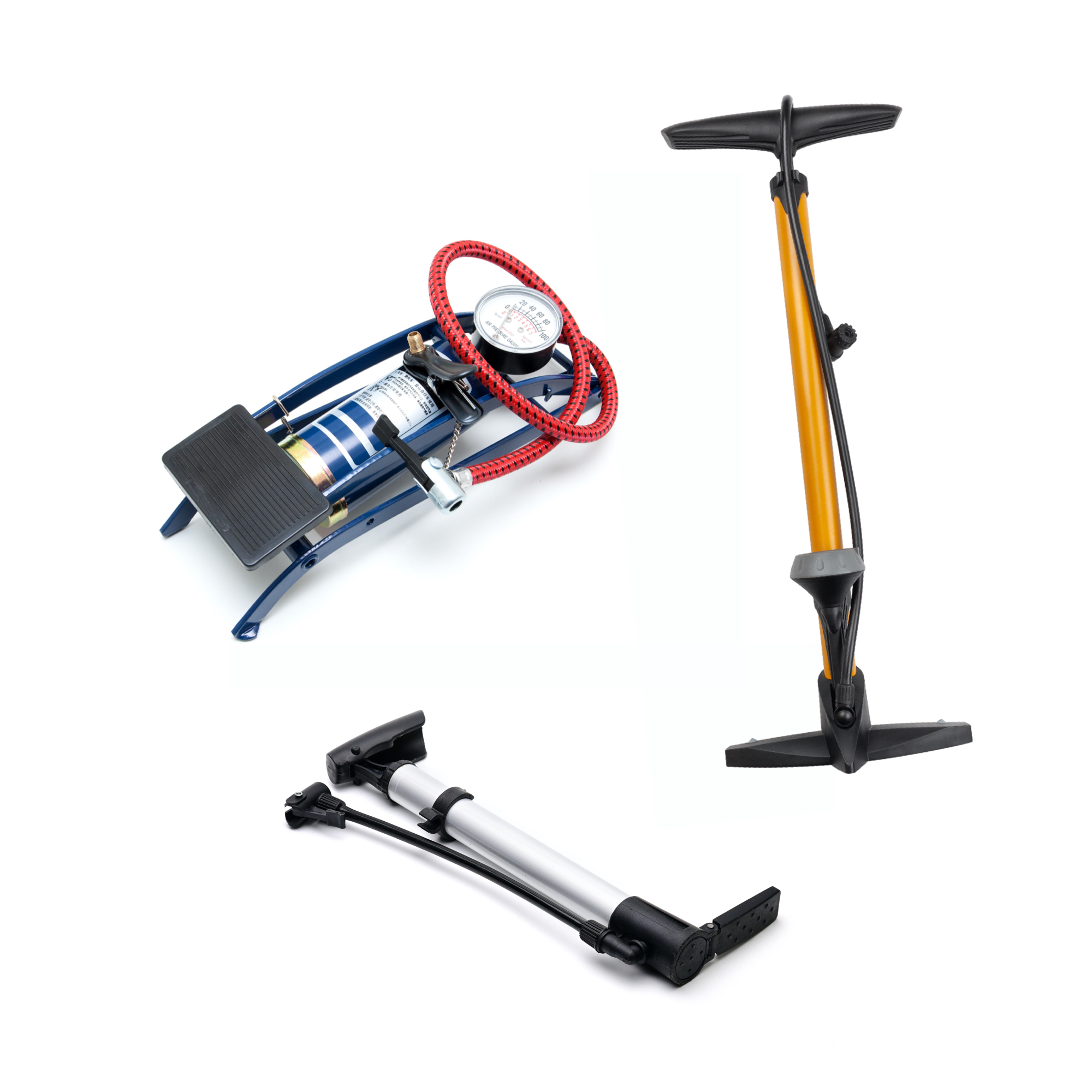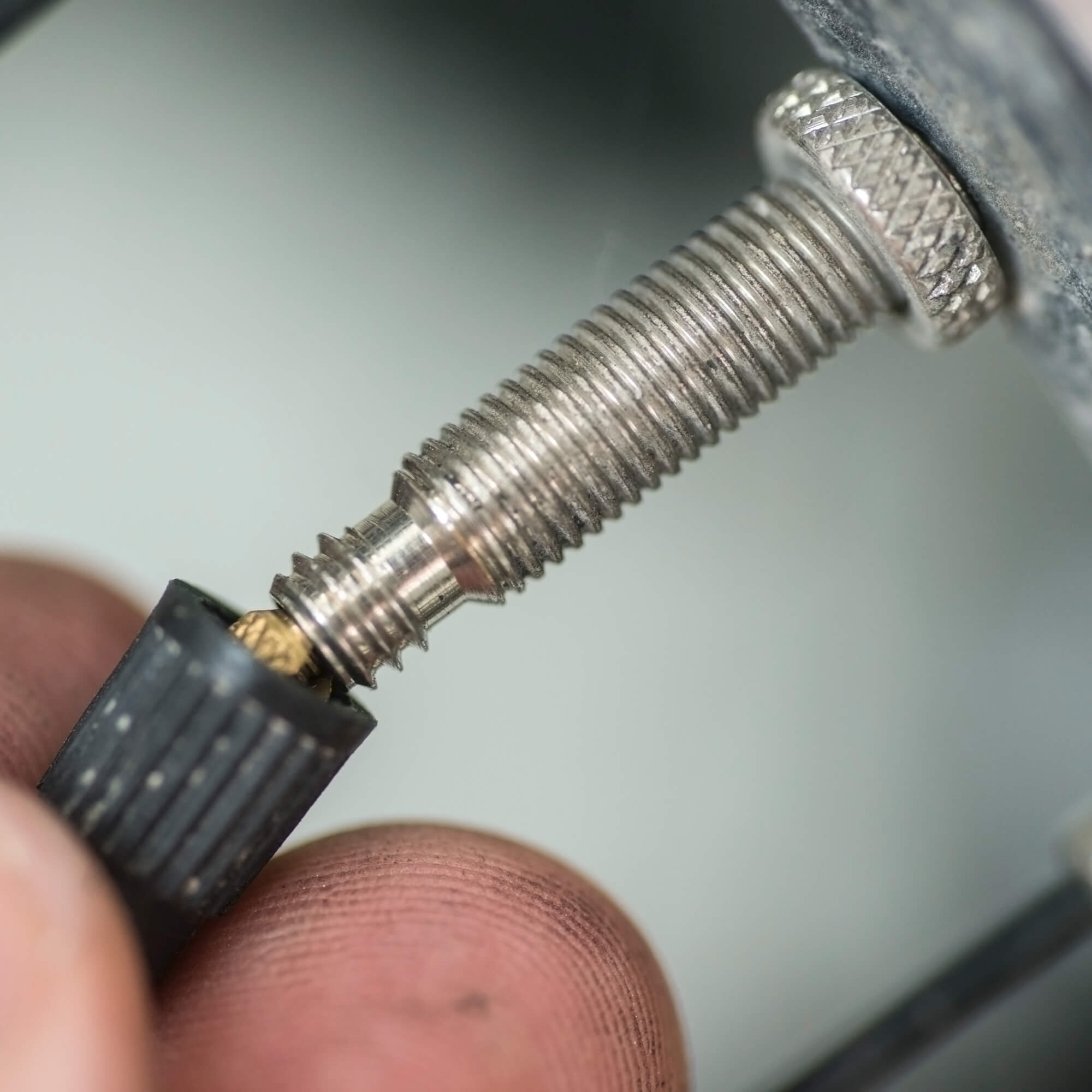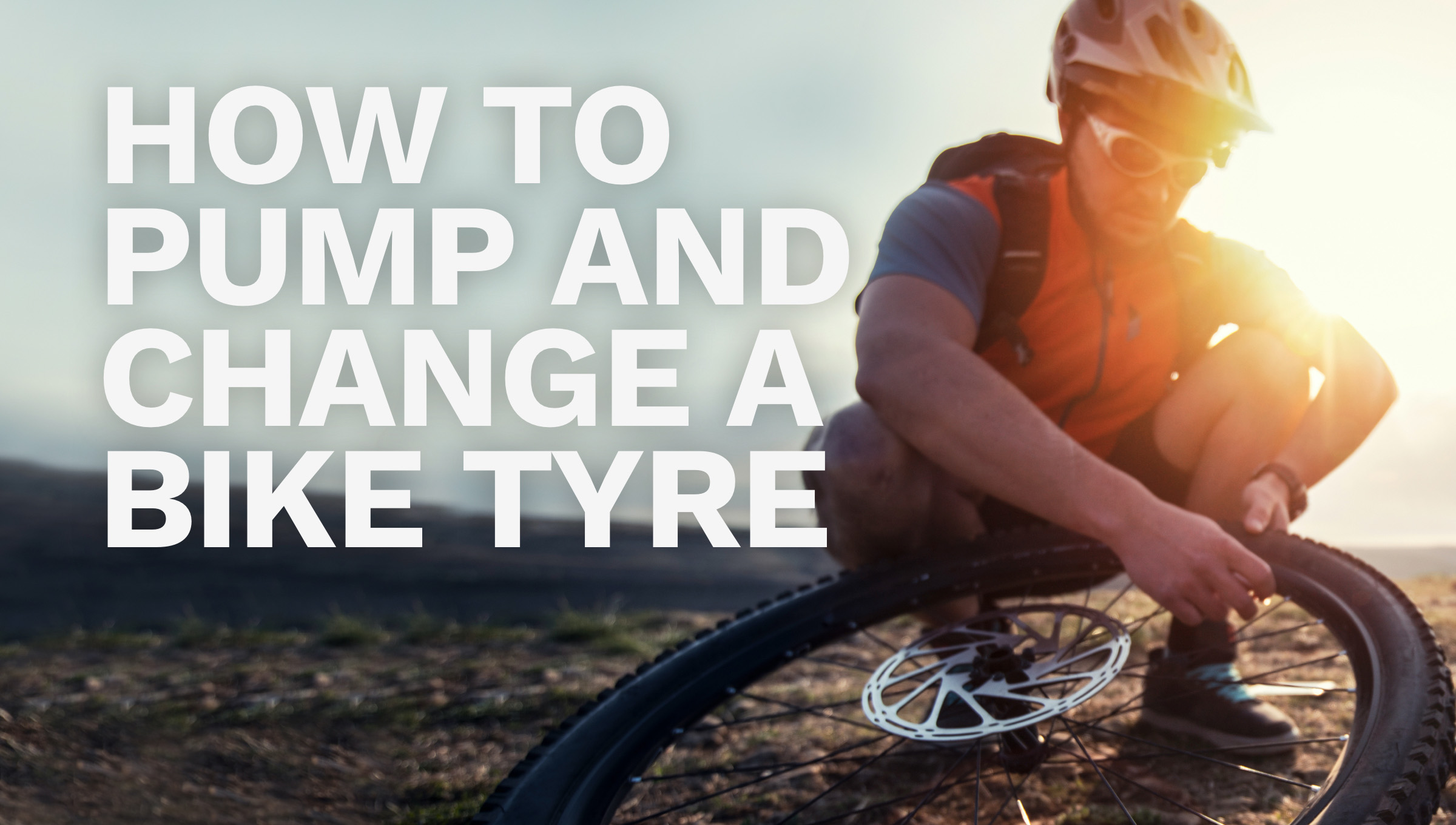
How to Pump, Change and Fix a Bike Tyre
Cycle Carriers
Whether you're a keen cyclist or you're just starting out, two of the most important things you should know how to do are changing and pumping up bike tyres.
After all, you don't want to be 20 miles away from home and have to walk back with a flat tyre.
So, follow our simple steps to take care of your bike and tyres so you are never stranded on the road.
How to Pump a Bike Tyre
1. Make sure you have the right pump
There are two valve types on a bike tyre. So, you need to make sure you have the right pump for the specific valve on your tyre. These are a Schrader valve, with a wide flat end, and a narrow Presta valve, with a locking nut at the top. If you're not sure which pump you need then take a picture of the valve and ask at your local bike shop.
2. Prepare the tyre valve
Once you have the correct bike pump, you're almost ready to use it. Take the plastic cap off and loosen the locking nut at the end of the valve stem then give the valve hole a few taps to check the air is moving. You only need to do this if you have a Presta valve.
3. Check your tyre pressure
It's important that you check the pressure before you start to inflate them. This will be written on the outer edge of your tyre and is measured in psi. This varies depending on whether you have mountain bike, hybrid bike or road bike tyres which is why it is so important that you check the correct tyre pressure to use. You will have a range and it is up to you to determine what is the right pressure for you based on your weight and riding style.
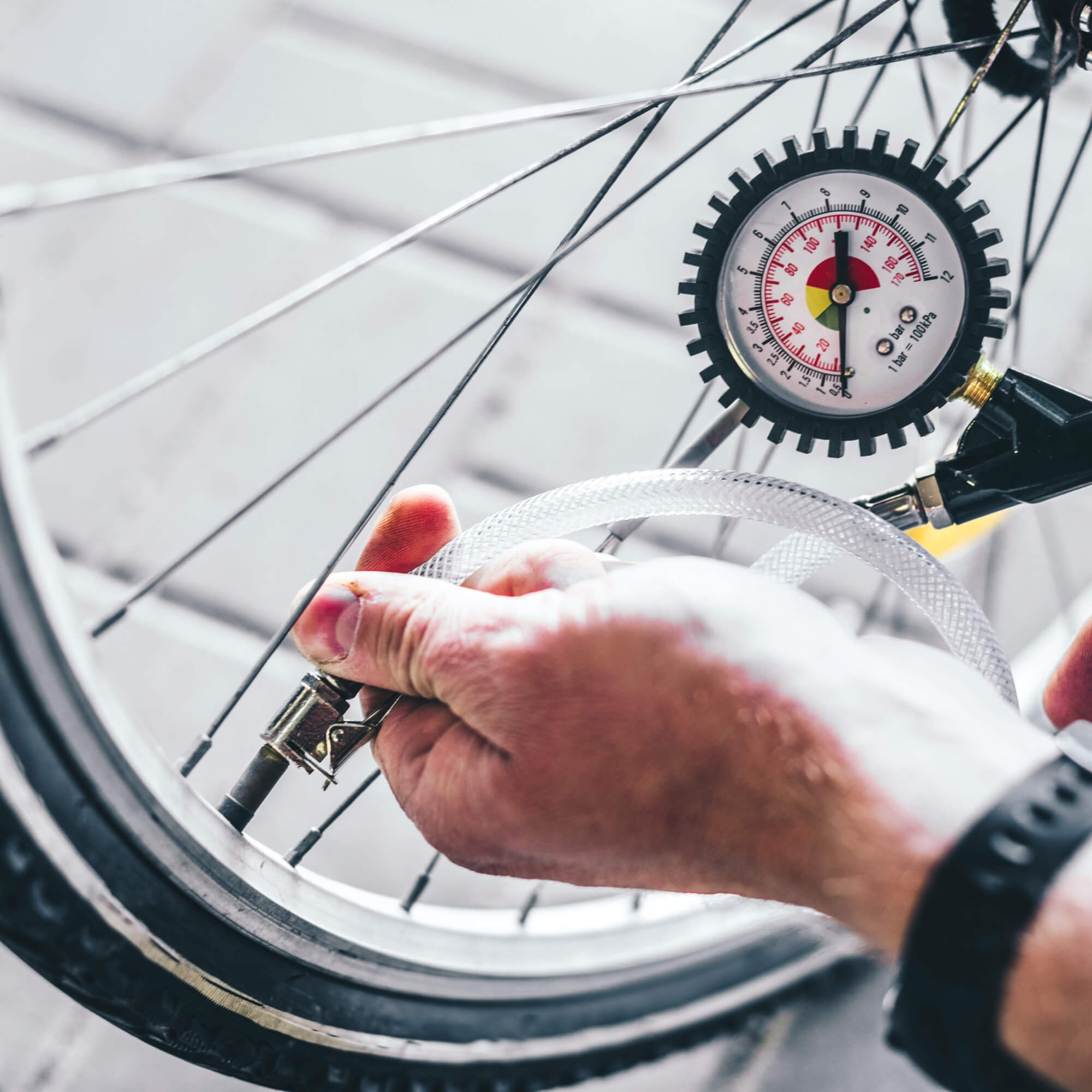
4. Attach the pump
The pump needs to be attached to the tube valve correctly otherwise the air escapes as you are pumping. So, if the pump screws on, it needs to be threaded correctly or if it has a switch it needs to be secured properly up or down. If it is not properly secured then undo the pump and reattach it.
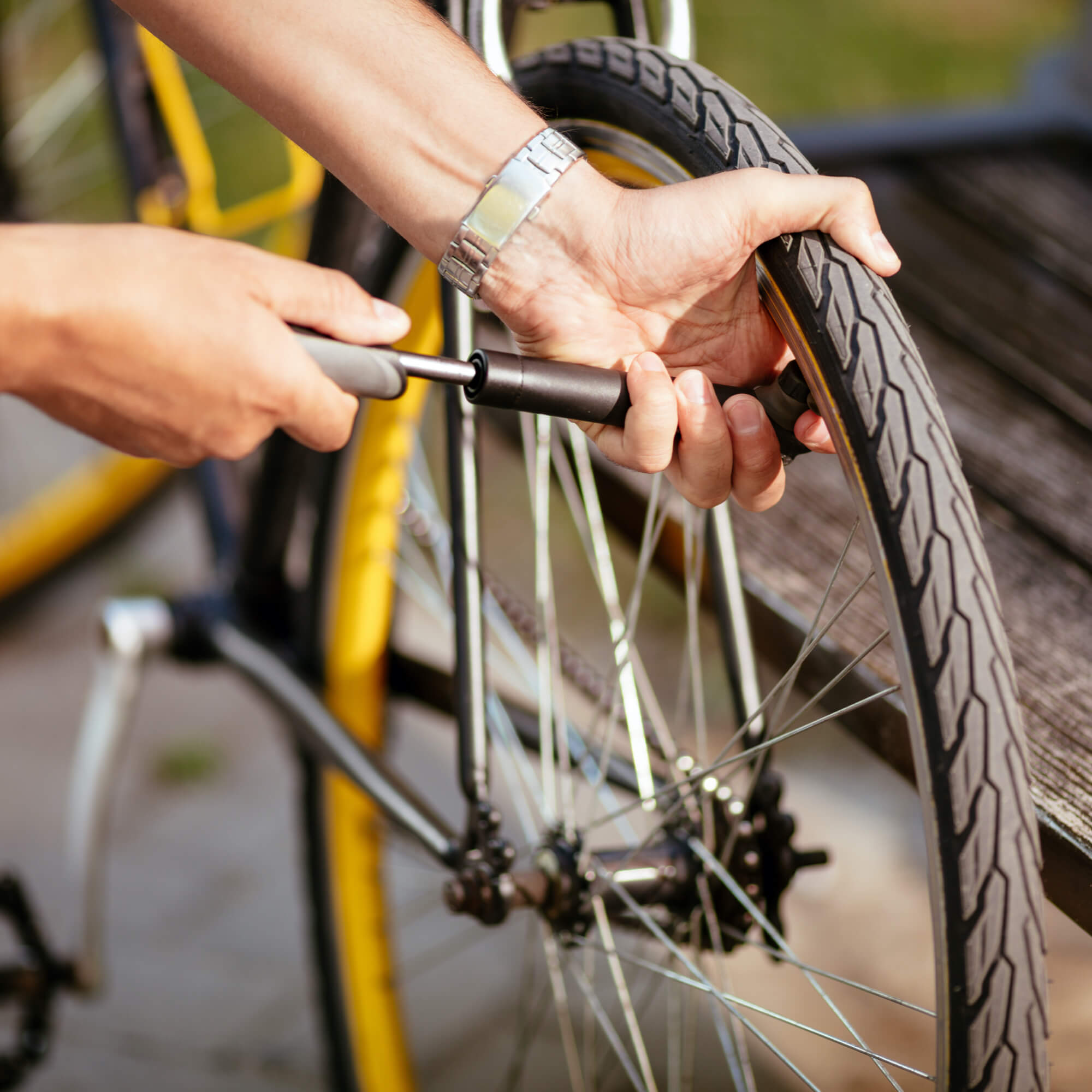
5. Pump up the tyre
It doesn't matter if you have a floor pump or a hand pump, what you need to keep an eye on is the pressure gauge. Pump your tyre up until the pressure gauge reaches the correct psi for you, within the recommended range on your tyres. Once you have reached the correct pressure, remove the pump, replace the plastic caps and you're ready to ride.
Sometimes, pumping up bike tyres just won't solve the problem and it may be time to replace the tyre or the inner tube. So, follow these simple steps to replace your bike tyre.
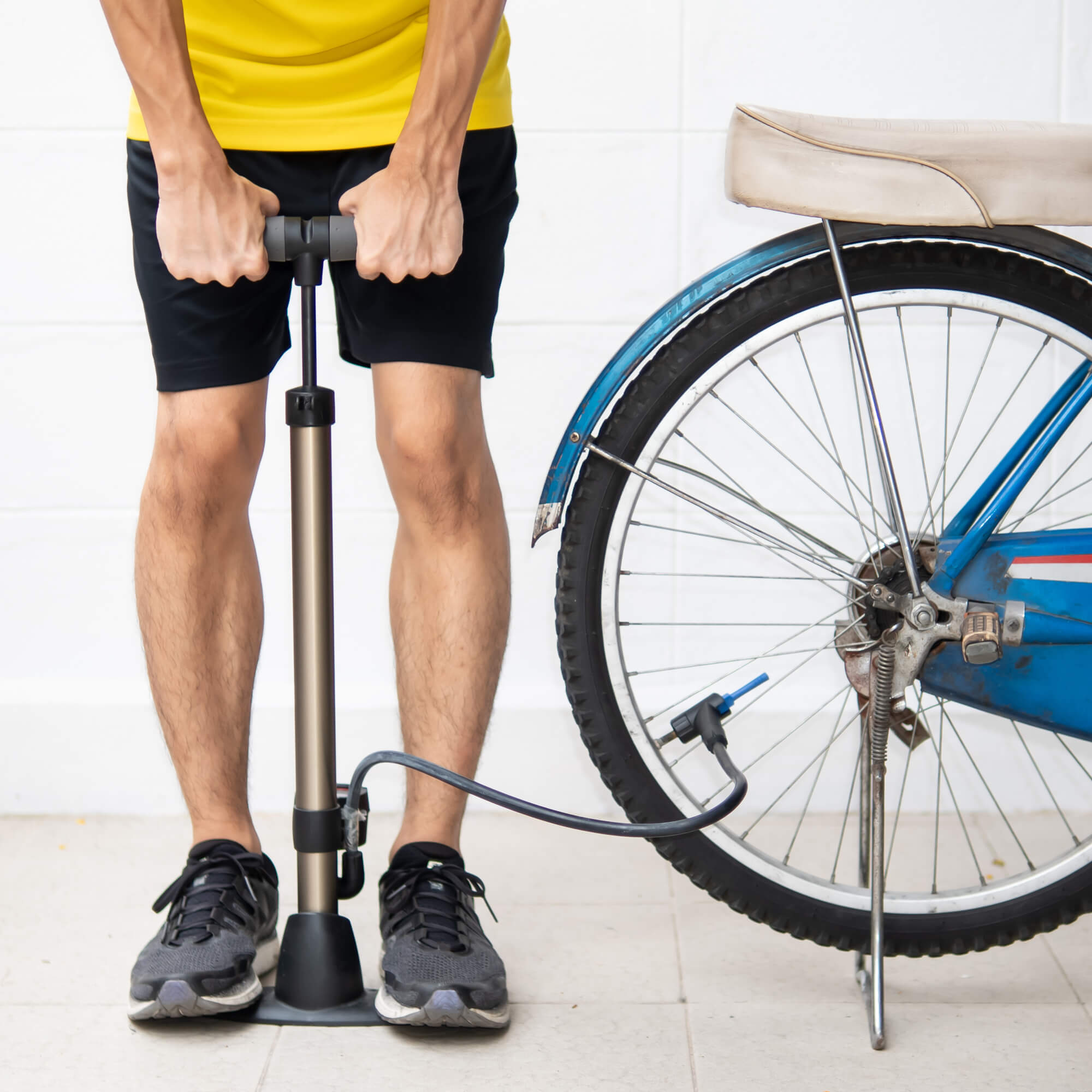
How to Change a Bike tyre
1. When to change the tyre
Bike tyres need to be replaced if the tread has worn down or the casing has become damaged. You may also need to replace the tyre if it has suffered a significant impact from hitting a pothole or becoming punctured.
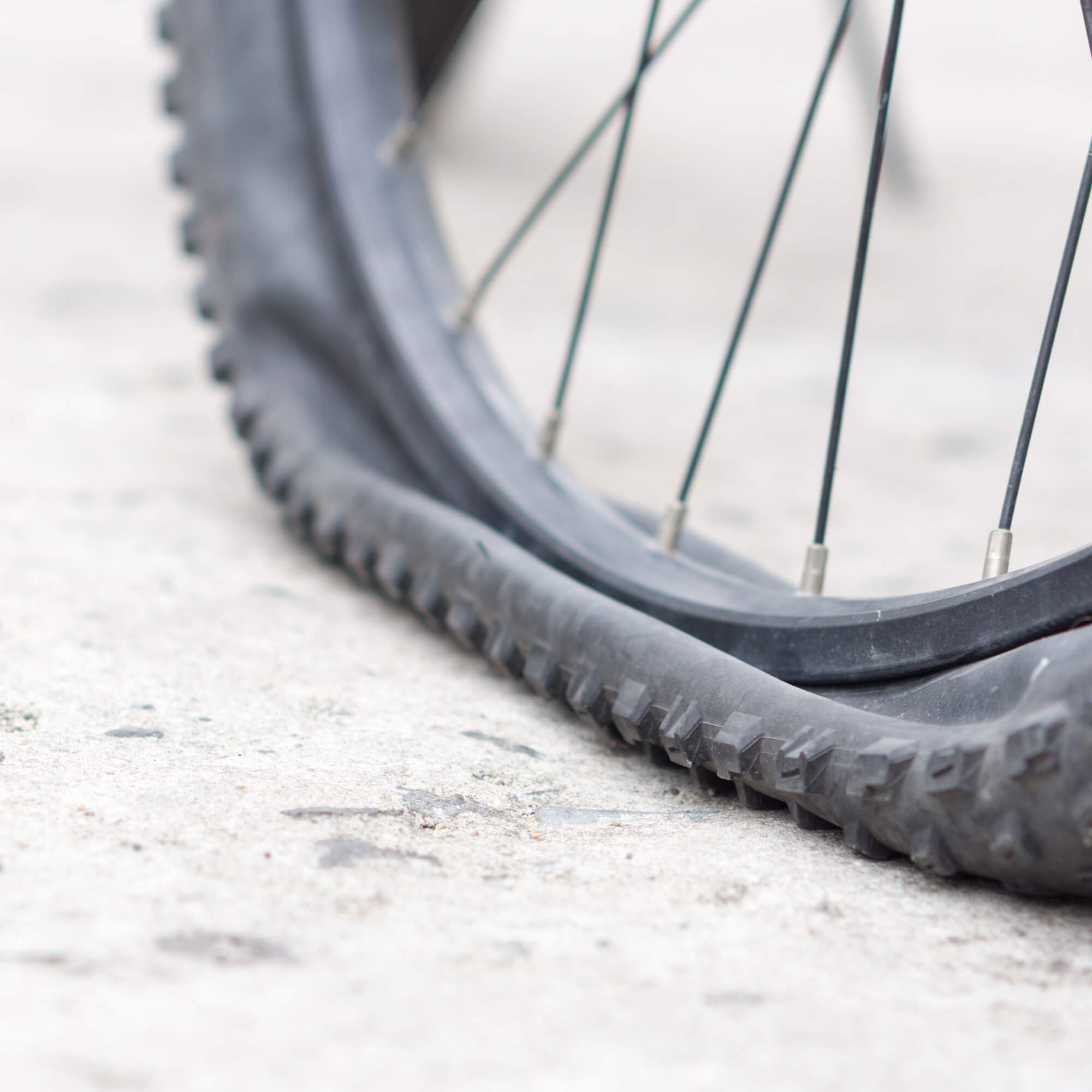
2. Remove the wheel
Put your bike in a secure and sturdy position ready to remove the wheel. This could be upside down, if you don't mind risking damage to the handlebars, on the side with the chain facing you so it doesn't get damaged or on a bike stand if you have one.
If you're taking off the back tyre then select the smallest gear before turning the quick-release tyre lever 180° to loosen and remove it. If you don't have a quick-release lever then you will need to use a wrench to loosen the knuts. Next, detach the brake cables if you need to and then remove the wheel from the frame.
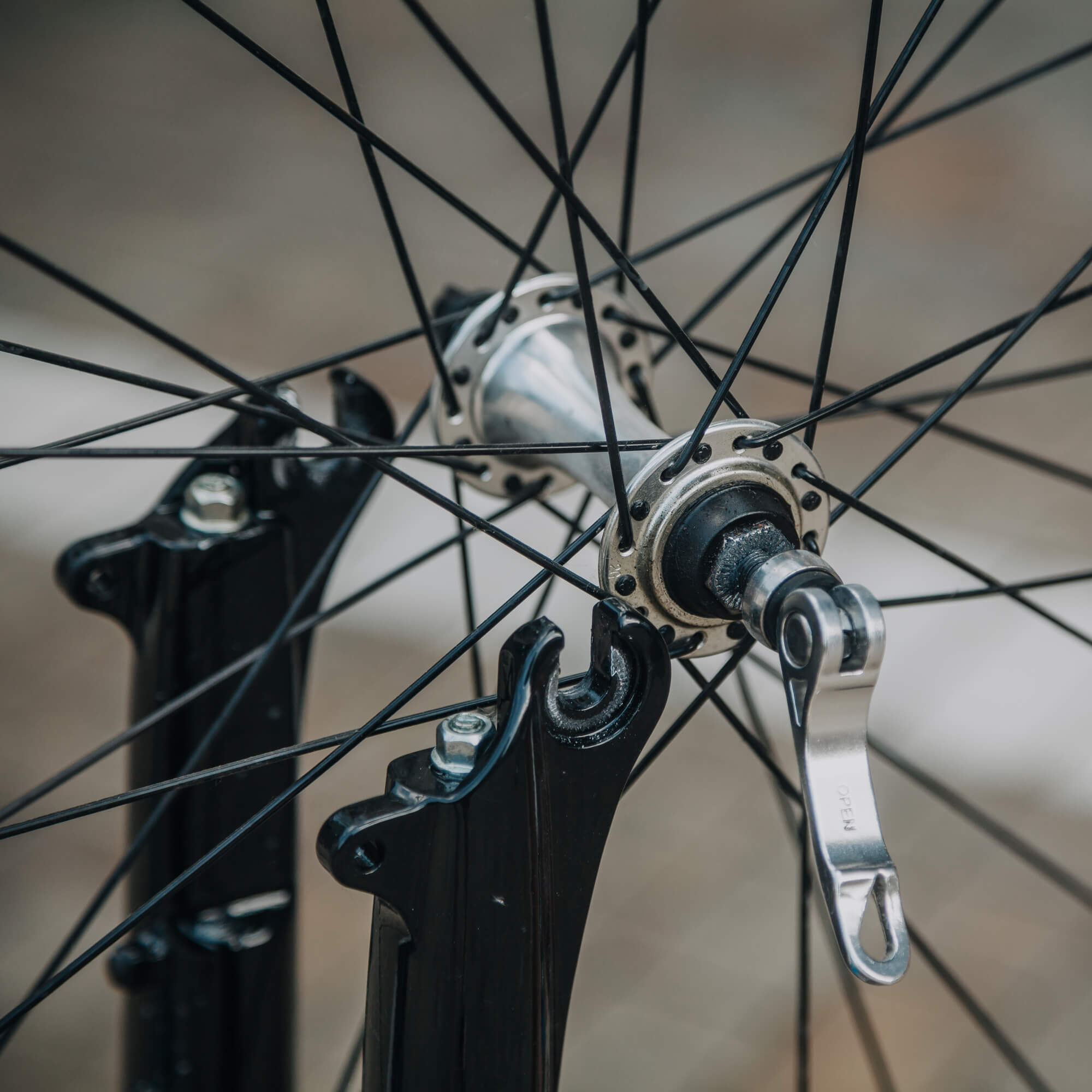
3. Remove the tyres and tubes
First, you should deflate the tube by unscrewing the cap from the valve. If you have a Shrader valve you can use a wrench to press the plunger in the valve or if you have a Presta valve then unscrew the locking nut and pull the valve cap up to let the air out. Once the tyre is deflated, use a tyre lever to unhook one edge of the tyre and attach the lever to a spoke.
Take a second tyre lever and move it clockwise around the tyre until the whole side of the tyre is out of the frame. Then you can take out the inner tube before completely removing the tyre to inspect it for a puncture before replacing the tube.
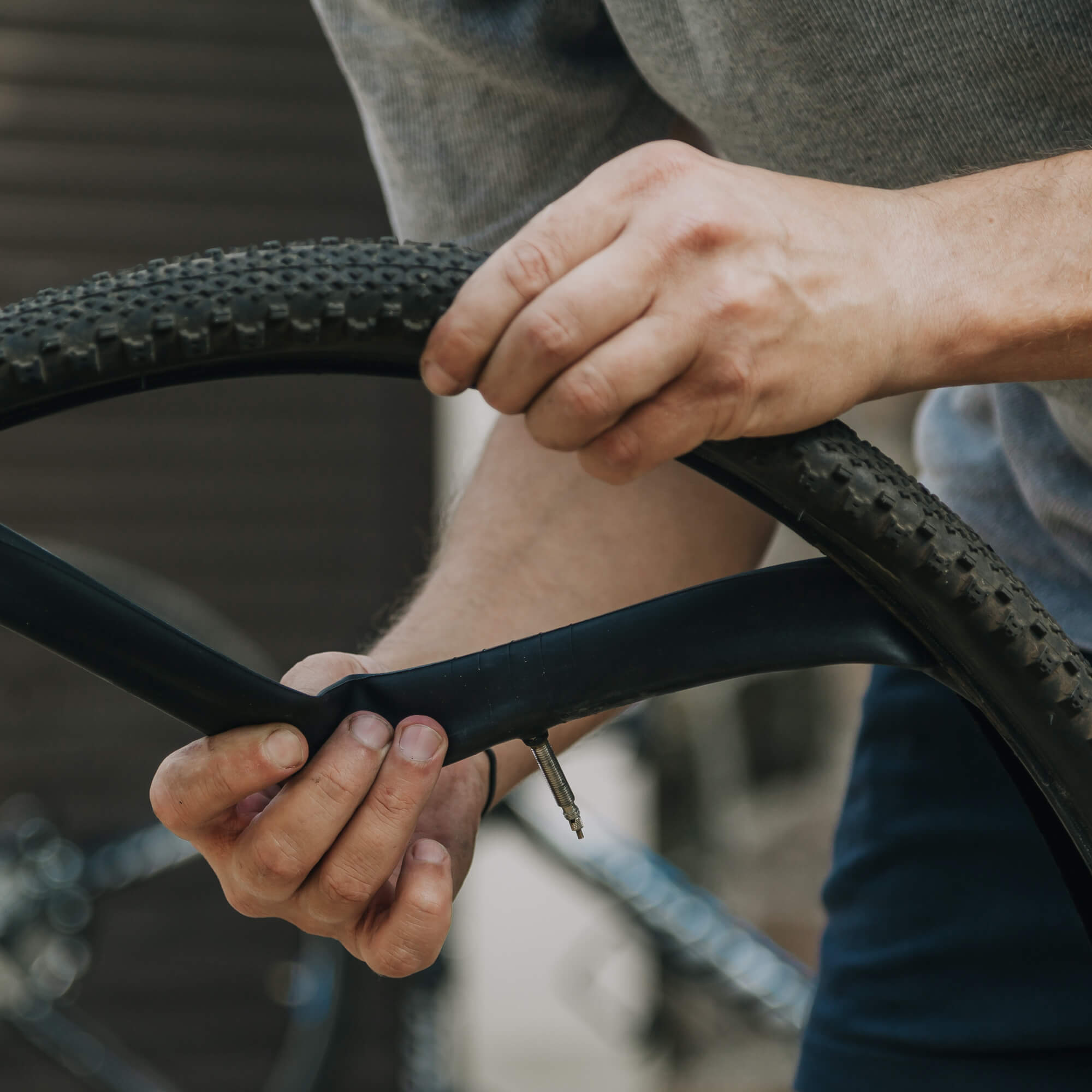
4. Replace the tyre
If the tyre has become damaged then you will need to replace it with a new tyre for your specific bike model. Repeat the process of removing the tyre in reverse by first checking the arrows on the tread are pointing the right way for the direction of travel and then work the tyre back into the frame on one side using your fingers.
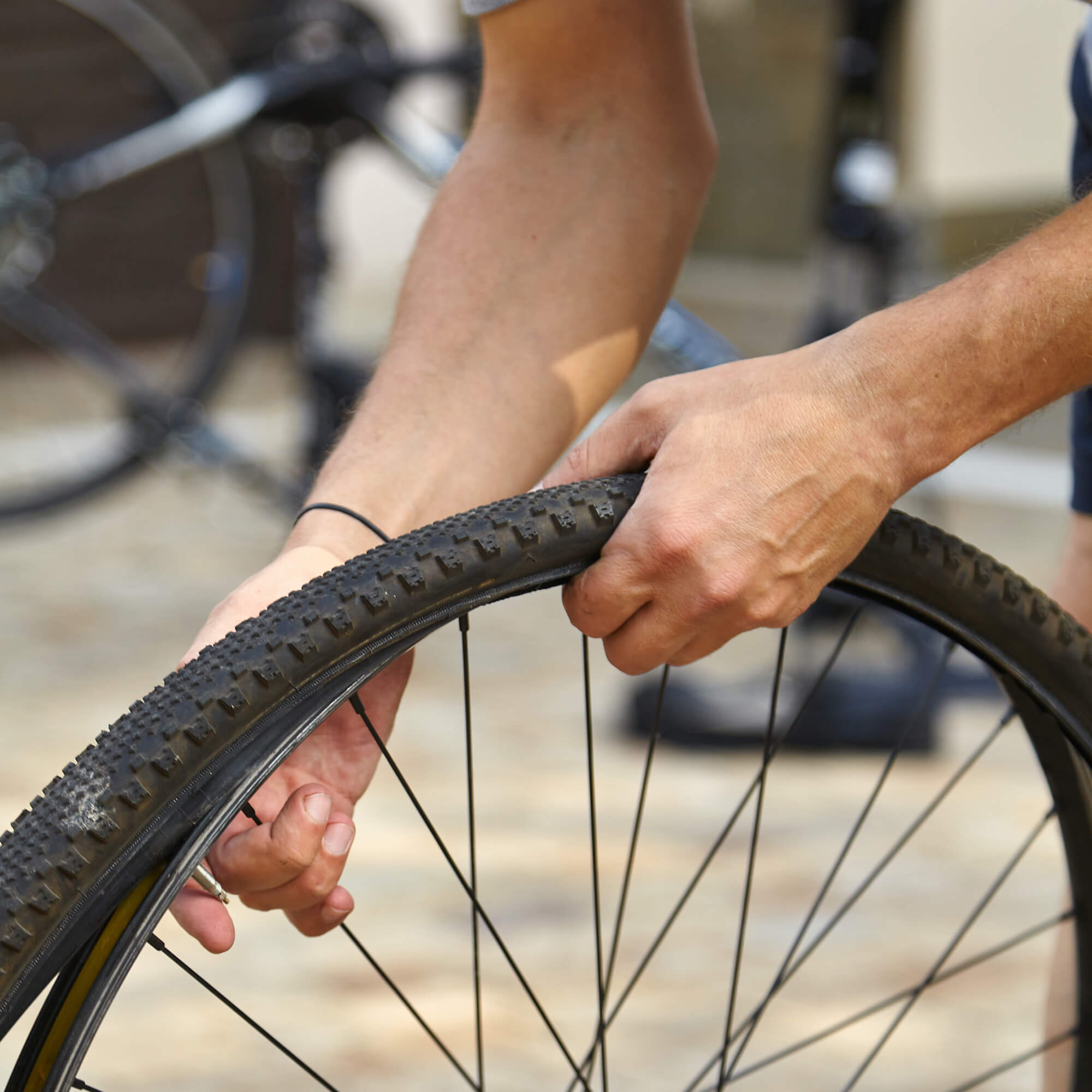
5. Insert the inner tube
Again, using your fingers, you should insert the inner tube back inside the tyre and check there are no twists or kinks in the tube. If you find any twists or kinks then take the tube out and start again.
Once the tube is inserted, make sure it is completely inside the tyre before working the other side of the tyre back into the frame by starting and finishing by the air valve. Screw the lock ring around the air valve and use your pump to inflate the tube to the correct pressure before replacing the plastic valve cap.
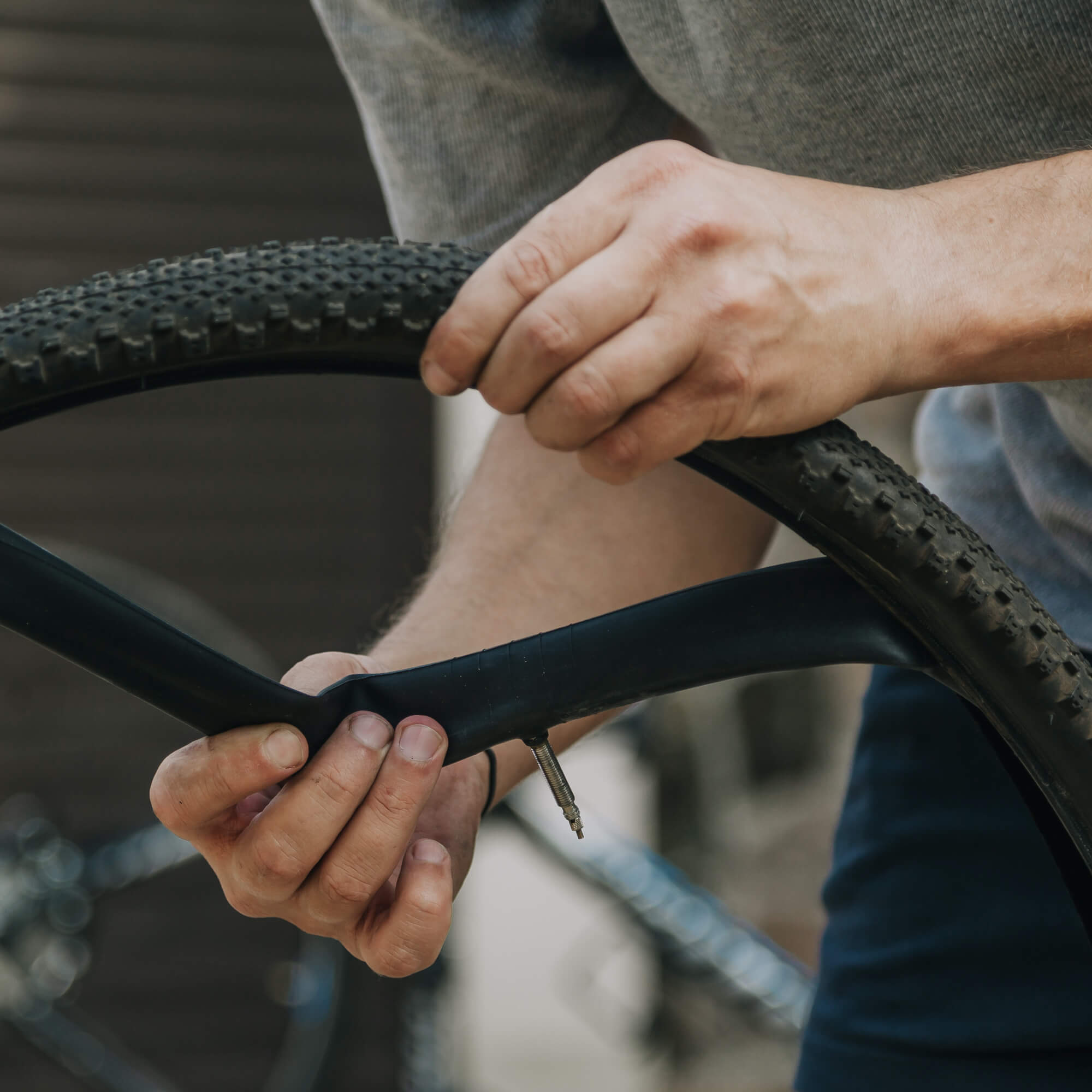
6. Replace the tyre
Slide the tyre back into the frame and replace the lever or knuts to hold it into place and check the wheel spins with ease when it is back in place. If you are replacing the back tyre then you'll need to lift the chain to get the wheel back in and you may also need to reattach the brake cables.
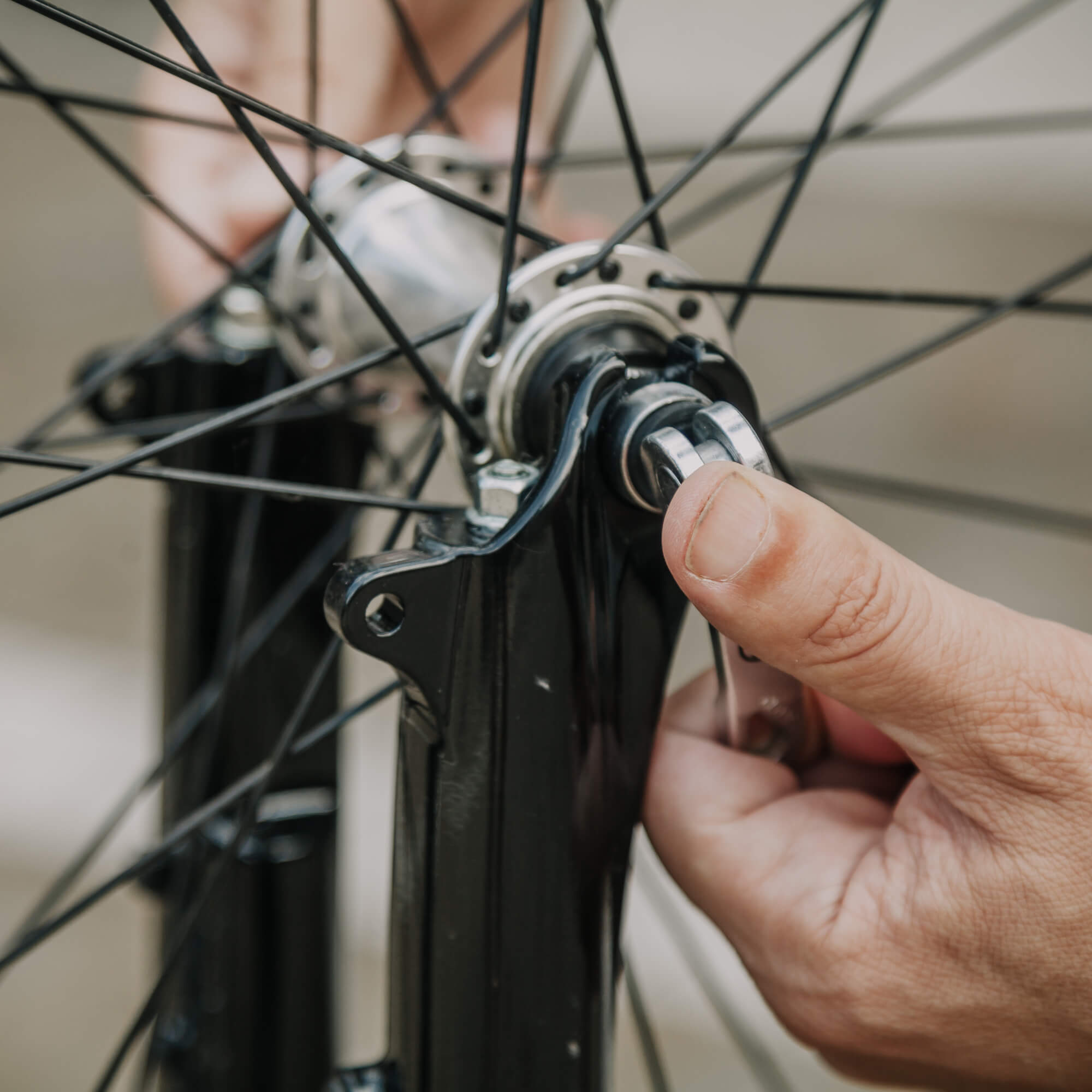
How to Fix a Puncture
Fixing a puncture is easy when you know how:
- If your tyre still has excess air, rotate the small nut at the top of the valve and press it to release.
- Hook the tip of one tyre lever underneath and anchor it into position using the spokes. Use the second tyre lever to gently run around the inside of the tyre until you can remove it from the wheel and see the inner tube.
- Then, remove the valve from the rim and take out the inner tube. Use the pump to inflate the inner tube to locate the puncture. Mark the puncture area with a pen.
- Line valve with the valve hole in the rim. Next, line up the inner tube and check that the offending object (glass, thorns, gravel etc) isn't caught in the tyre. Remove any object that has penetrated your outer tyre.
- Slightly inflate the repatched or replacement inner tube. Now, refit the tyre on one side, ensuring that the tread on your wheel is pointing the right way. Match up the valve with the valve hole and then feed the inner tube into the space between the tyre and rim.
- Fully refit the tyre by twisting it back into place. Start at the valve and work your way around the wheel- checking there are no bulges.
- Lastly, pump up the inner tube and attach the wheel back onto the bike.
After pumping up bike tyres or changing a tyre or inner tube, it's a good idea to test your bike out on your road or on a short run before going for a long cycle. When you're happy that your tyres are safe and secure, it's time to hit the road. If you're heading out on a longer family bike ride away from home, check out our bike racks to transport all of your bikes safely to your cycle route and have fun on your ride.

